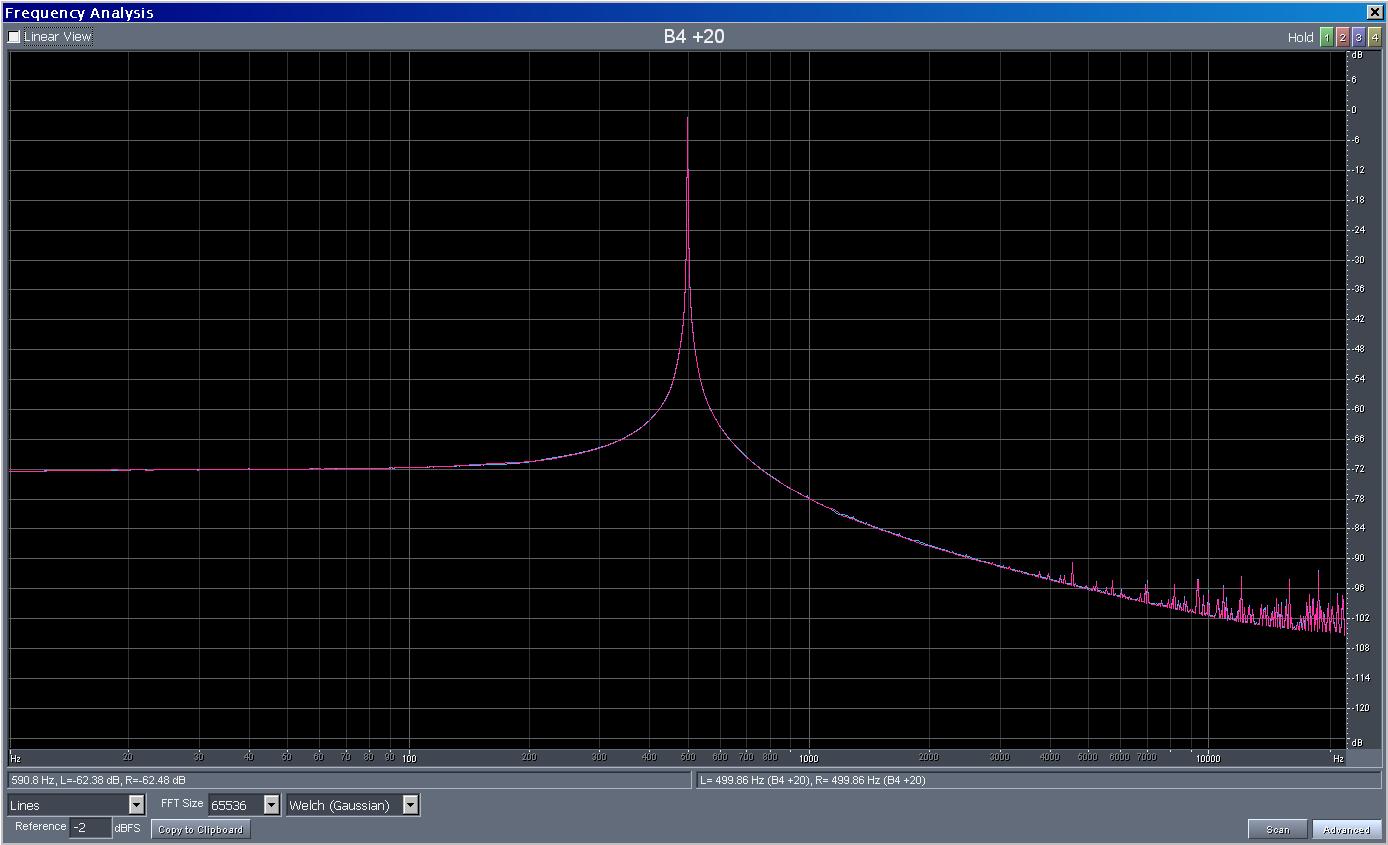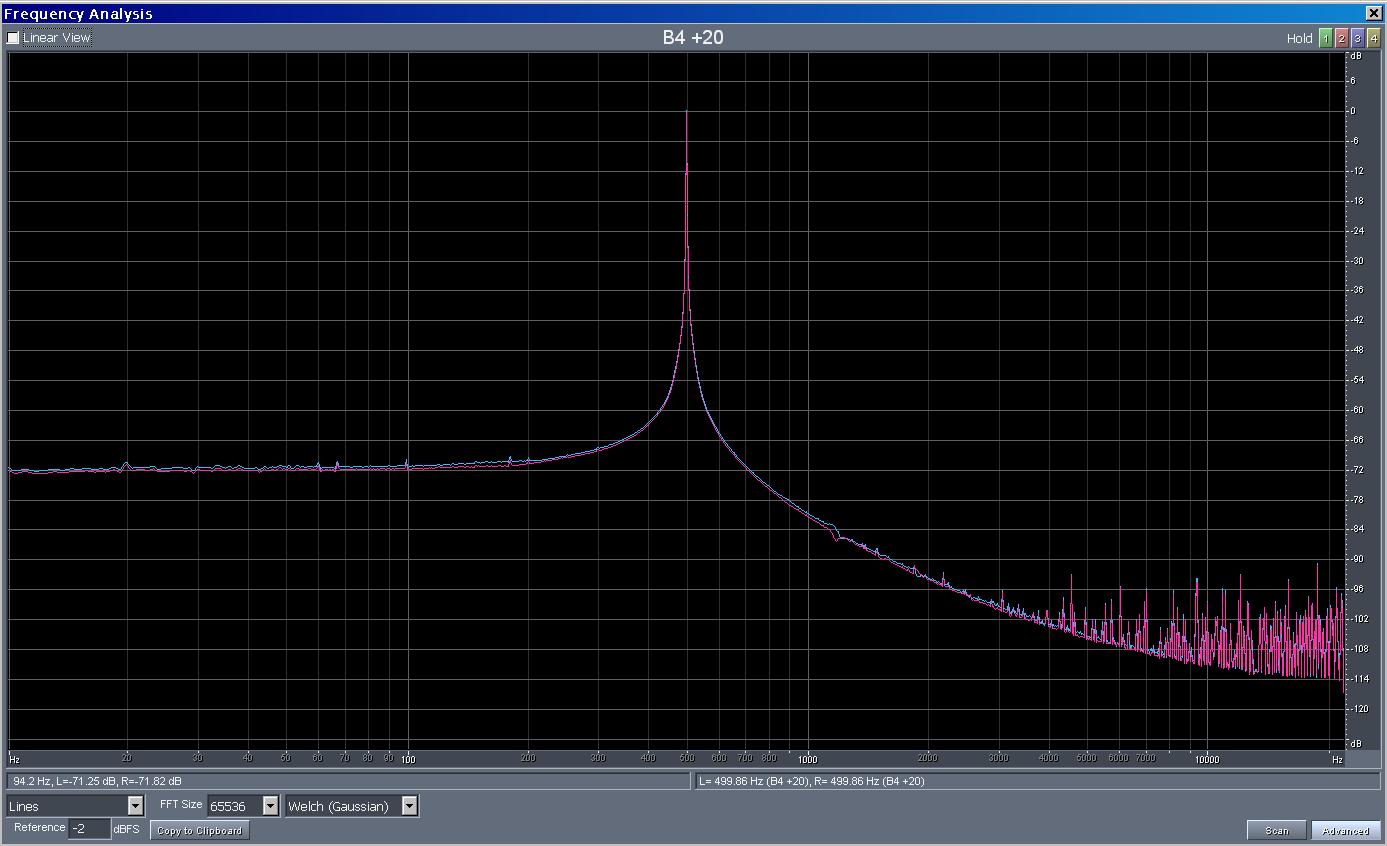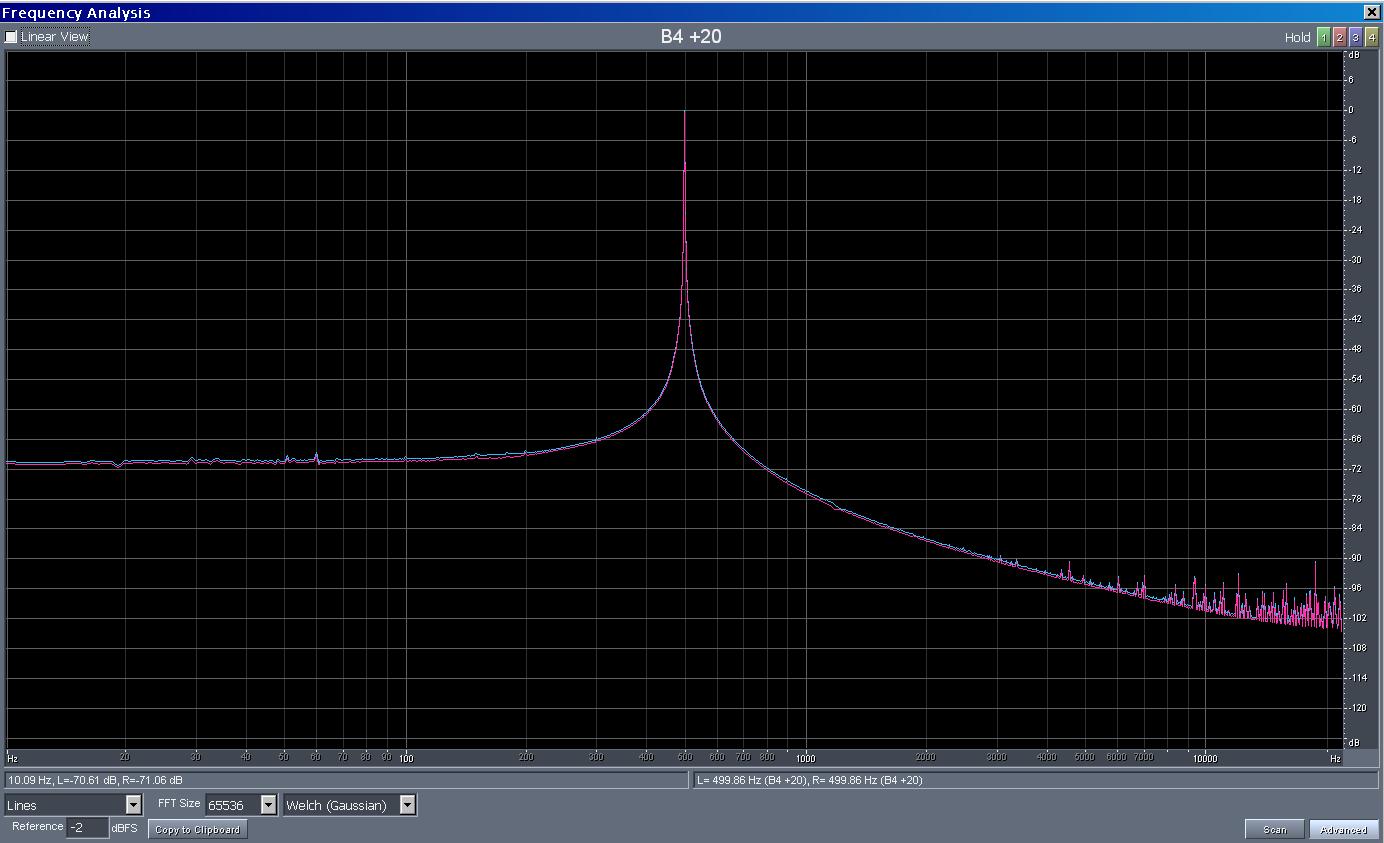The margin of error in my testing is about 0.1 dB, so the Onkyo DX-7555 in sharp mode (dark maroon line) has perfect ruler flat response to the best of my ability to test it.
After a little searching I picked out a fairly recent player from Onkyo, the DX-7555. It's new enough it hasn't been reviewed by any source I could find, so I bought it from a place with a generous return policy. Found it at B&H Photo.
It arrived double boxed with security tape in perfect condition. Before listening, I played it on repeat for 24 hours to make sure it was burned in and warmed up.
Next I subjectively auditioned the player with some of my favorite recordings to find it virtually identical to the Rotel RCD-1070 that I use in my big stereo system. There was the slightest hint of a difference in the mid bass frequencies, which are more pronounced on the Rotel. This is so subtle it is only barely audible on a few recordings and hard to say which is more accurate. This was A GOOD THING; my portable was not quite as clean and linear as the Rotel.
Before getting into the details, here is the FR in the four modes I tested,
including the RCD-1070 for comparison:
The margin of error in my testing is about 0.1 dB,
so the Onkyo DX-7555 in sharp mode (dark maroon line)
has perfect ruler flat response to the best of my ability to test it.
The blue and pink curves were measured through the Maxed out Home headphone amp (MOH), which gently rolls off to -0.5 dB @ 20 kHz.
I measured it in four ways, all in my headphone system to the sound board in my computer. I used test signals from the Stereophile CDs, recorded and analyzed the waveforms.
1. Direct from the Onkyo's line outs to the computer (bypassing the MOH amp).
2. Onkyo line out --> MOH, analyzing the output of the MOH from its headphone jack with the MOH volume control at unity gain (the approximate 12:30 position).
3. Same as 1, but with the Onkyo's digital filter in "slow" mode (instead of on "sharp" which is the default setting).
4. Directly from the Onkyo's built-in headphone jack in sharp mode.
1: Line Out, Sharp Mode, direct:
As you can see from the above FR graph, the Onkyo has almost the same FR as the Rotel. The only difference is at 20 kHz which is 0.5 dB lower on the Rotel. This is the same as the Onkyo with its digital filter in slow mode.
The Onkyo's THD + noise:

is excellent.
This is the lowest level of THD + noise I have ever seen in any component.
The first 7 harmonics are not even measurable, and the 8th is less than -90 dB!
2: Line Out, Sharp Mode, through MOH:
THD and noise are excellent.

As you can see above, adding the MOH into the signal chain makes a lower noise floor,
but with a busier spectrum.
The highest harmonics are maxing out between -90 dB and -96 dB, same as before.
This shows that the MOH has phenomenally low distortion.
There is no difference in FR until 8 kHz, at which point the MOH gradually tapers to -0.5 dB at 20 kHz.
3: Line Out, Slow Mode, through MOH:
Slow mode adjusts the digital filter to roll off more gradually starting at a lower frequency. Theoretically it should have less ripple (smoother FR) and less phase distortion. But in reality it made virtually no difference. There is no audible difference (at least to me) switching from sharp to slow mode. Measurements are slightly different but nothing significant. The Onkyo, with its digital filter in slow mode, has the same FR as the Rotel.
In slow mode, THD + noise is slightly (3-6 dB) higher, but still excellent at -90 dB or lower.
But the noise frequency spectrum is slightly cleaner and smoother.
See below:

Frequency response in slow mode is identical from 20Hz to 16kHz. Slow mode rolls off 0.5 dB more so at 20kHz it's -0.5 dB instead of flat. Or, with the MOH in the system, it's -1 dB instead of -0.5 dB. Half a dB at 20kHz may be audible to bats, but not to many humans, certainly not me.
4: Headphone Jack
Subjectively, the Onkyo's headphone jack sounds clean yet slightly warmer than the line outs into the MOH. Also there is slightly less resolution in the midrange. It is pleasant but less involving, probably more than good enough for most headphones. But with the Sennheiser HD-600s the MOH provides a more compelling and realistic portrayal of the music.
FR of the Onkyo's headphone jack is virtually identical to the line out up to 2500 Hz, at which point it begins to roll off the highs. From 2500 Hz it drops off progressively to -3.3 dB @ 20 kHz. This is about 3 dB more rolloff than the line outs in sharp mode, which is subtle, yet audible with careful listening on good recordings. It becomes audible not necessarily as a loss of highs, but as a slightly more laid back sound with less midrange detail.
THD+Noise through the headphone jack is virtually the same as through the line outs & MOH.

But remember that noise is function of bandwidth.
Since the HJ jack rolls off the highs, one would expect it to have lower noise due to its limited bandwidth.
The MOH manages to achieve the same low noise & distortion over a wider bandwidth,
which is a testament to its ultra clean electronics.
Those Burr Brown OPA 627s do indeed make a difference!
Overall, the Onkyo's headphone jack is decent but nothing spectacular. It doesn't do justice to the quality of its DAC and analog line output.
Notes:
The Onkyo plays MP3 files but not HDCD. The Rotel plays HDCD but not MP3. I find MP3 far more useful, especially since HDCD discs can be decoded on a PC to uncompress their full dynamic range, then reburned to a normal CD.
The Onkyo uses a Wolfson DAC, AFAICT it's the WM-8718. The Rotel uses a Burr Brown PCM1732. The PCM1732 is several years old, good for its time but it was never SOTA and is now a dated design. But a CD player is more than a DAC. DACs from several years ago are still cleaner and more linear than most of the analog gain stages driving the line outputs. The Wolfson is a better DAC, but either one is good enough that the quality of the player's analog gain stage plays a much bigger role in overall sound quality.
The Onkyo internals and layout are clean and high quality, but the Rotel has the edge in this area. The Rotel has a toroidal transformer in its power supply, and 10 dB lower 60 Hz line ripple. But both have extremely low line noise below -100 dB (Onkyo -106 versus Rotel -116). The Onkyo's line output stage is not as stiff as the Rotel's - the Onkyo's output impedance is 470 Ohms, compared to < 100 ohms for the Rotel. Assuming a 1:20 impedance ratio is sufficient to prevent any induced distortion, the Onkyo should drive a preamp with an input impedance >= 10 kOhm. This covers just about every preamp out there (most preamps have input impedances from 20 kOhm to 100 kOhm), but the Rotel is better able to drive lower impedance loads. Even if you (like me) use a 10 kOhm passive attenuator, the Onkyo will be fine - though the Rotel is an easy no-brainer.
The Onkyo has slightly lower THD+noise, -90 dB versus -87 for the Rotel.
The Onkyo and Rotel have the same frequency response with the Onkyo's digital filter in "slow" mode. The difference between "sharp" and "slow" is about 0.5 dB at 20 kHz.
The FR measurements were corrected for my sound board's FR curve, but distortion was not. Distortion measured includes the distortion inherent to the sound board.
I also measured the specs at 9:00 on the MOH volume control, about 15 dB quieter than unity gain. This is the typical position of the volume knob when I'm listening on my headphones. I did this because the output level of the Onkyo is a true 2 V, which is standard for full size components but about 12 dB louder than my old portable (the portable output level was about 0.5 V). With my old portable, the volume knob was right in the middle, about 12:00. As expected, in the 9:00 position the noise floor was significantly higher, yet still inaudible due to the higher level of the CD player input to the MOH. But the FR was exactly the same. Also, the L-R balance was still good (less than 1 dB of difference). I found the MOH volume knob to be balanced and linear from about the 8:00 position on up (minimum volume is at 7:00).
This test reveals some interesting facts about the MOH amp. First, it has perfectly flat FR into the mid-high treble at which point it has a very slight, smooth rolloff eventually reaching -0.5 dB at 20 kHz. Second, it has extremely low distortion.
The Onkyo, like any well engineered CD player, has ruler flat response and incredibly low distortion. It also has great sound quality when playing high bit rate MP3s, both CBR and VBR. At $480 shipped to my door, it was a superb value. I could have bought a CD player costing $1 kilobuck or more, but why? It wouldn't sound any better and the difference in cost buys a lot of music.
Summary:
Good Stuff:
Bad Stuff: